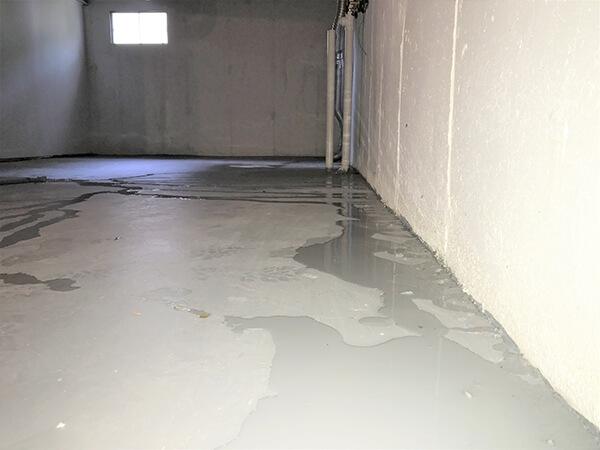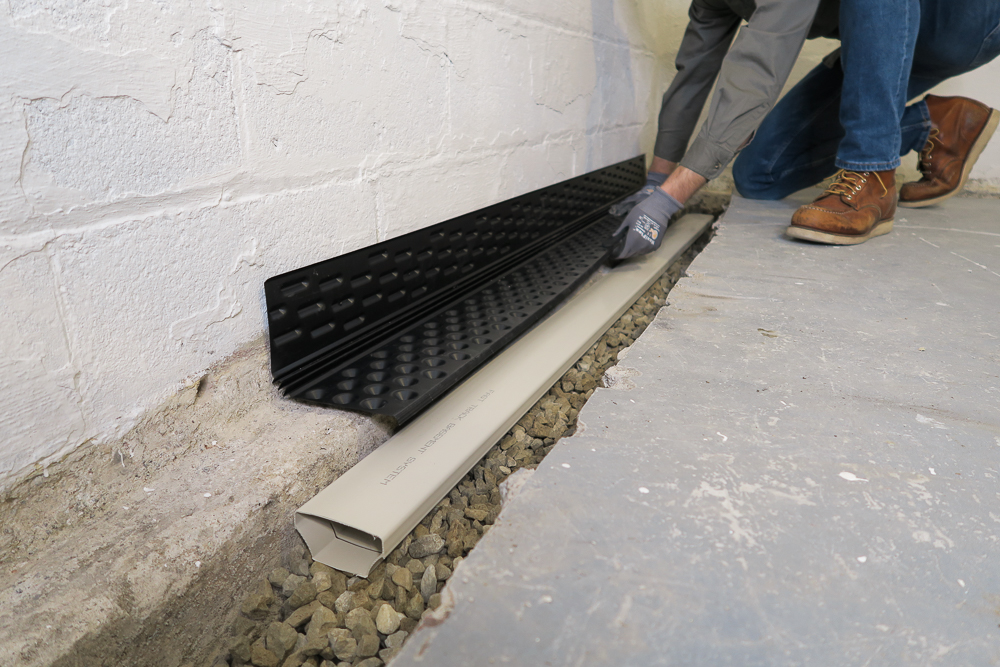Water Solutions Omaha vs. DIY Fixes: What's More Effective?
Exploring the Various Techniques of Cellar Waterproofing and Their Advantages
Cellar waterproofing is important for preserving a steady and completely dry environment. Various methods exist, each with unique advantages. Interior sealants secure versus dampness breach, while exterior systems address drainage issues. Sump pumps and French drains handle water successfully, and dehumidifiers regulate moisture degrees. Understanding these options can assist house owners make educated choices. Yet, the appropriate solution frequently depends upon particular situations and requirements. What aspects should one think about when selecting the best approach?
Inside Sealants: An Effective Barrier Against Wetness
Interior sealers act as a necessary line of protection against moisture intrusion in cellars. These products are designed to develop a water-proof barrier on floors and wall surfaces, properly avoiding water from permeating in. Readily available in different forms, consisting of coverings, paints, and sealers, they can fill splits and pores in concrete, making certain a more safe and secure environment.The application procedure generally entails cleaning up the surface areas to remove dust and debris, complied with by the careful application of the sealer. As soon as treated, these items enhance the resilience of the cellar while reducing humidity degrees, which can result in mold and mildew growth and structural damage.Moreover, indoor sealers are typically very easy to apply and can be a cost-effective option for homeowners seeking to minimize moisture issues. By giving a dependable layer of security, they play a vital role in securing the cellar room, preserving both its stability and functionality.
Outside Waterproofing Equipments: Securing Your Structure
When property owners seek to safeguard their foundations from water damage, exterior waterproofing systems use a durable remedy. These systems typically include using waterproof membranes and drain systems to the outside walls of a cellar. By developing an obstacle versus groundwater, they successfully stop wetness from permeating the foundation (Exterior Drainage Solutions).One remarkable benefit of exterior waterproofing is its capability to deal with the source of water breach prior to it reaches the inside. This positive method not just safeguards architectural integrity however likewise improves the longevity of the home.Moreover, outside systems can improve the total water drainage around the foundation, reducing hydrostatic stress. This lessens the chance of splits and heaving that can arise from water buildup. Consequently, homeowners can appreciate a completely dry, stable cellar environment, substantially improving building value and comfort. Ultimately, exterior waterproofing systems are a vital financial investment in preserving a healthy and balanced home structure
Sump Pumps: Managing Water Buildup Efficiently
Sump pumps play an essential duty in taking care of water build-up in basements, supplying an effective option for homes vulnerable to flooding or excess wetness. These tools are installed in sump pits, commonly located at the most affordable point of a cellar, where they collect water that leaks in from the bordering soil. When the water level climbs, the sump pump activates, effectively draining the excess water to a designated drain area, thereby stopping possible damage to the foundation and interior spaces.There are 2 major kinds of sump pumps: submersible and pedestal. Completely submersible pumps are mounted undersea, making them much less visible and typically quieter, while stand pumps are positioned above the sump pit and are less complicated to maintain. By efficiently handling water accumulation, sump pumps not only secure versus architectural damages yet also contribute to a healthier living environment by minimizing moisture degrees and preventing mold see this website growth.
French Drainpipes: Rerouting Water Far From Your Home

Dehumidifiers: Lowering Moisture Degrees for a Drier Atmosphere
Basement waterproofing discover this info here includes different approaches, and dehumidifiers play a significant role in maintaining a completely dry setting. By properly minimizing moisture levels, dehumidifiers assist avoid moisture accumulation, which can result in mold growth, structural damages, and undesirable odors. These devices function by removing excess wetness from the air, producing Discover More a healthier and more comfortable space.In addition to improving air top quality, dehumidifiers can boost the performance of other waterproofing methods, such as securing and drain systems. They help keep suitable humidity levels, generally in between 30% and 50%, which is essential for avoiding condensation on walls and floors.Moreover, modern-day dehumidifiers are energy-efficient and come with attributes like programmable settings and automatic shut-off, making them user-friendly. On the whole, integrating a dehumidifier into cellar waterproofing prepares offers a crucial layer of security against moisture-related problems, thereby guarding the home's stability.
Regularly Asked Concerns

How Much Time Do Waterproofing Solutions Commonly Last?
Waterproofing remedies normally last in between 5 to twenty years, depending upon the method used, top quality of products, and environmental problems. Routine maintenance and inspections can aid prolong their efficiency and overall life-span.
Can I Water Resistant My Basement Myself?
The individual taken into consideration whether to water resistant the basement independently. They uncovered that while DIY choices exist, understanding of products and methods is necessary to ensure efficiency, and professional aid might supply better lasting results.
What Are the Signs of Cellar Moisture Issues?
Indicators of basement dampness issues consist of visible water spots on wall surfaces, moldy smells, peeling paint, mold and mildew development, and moisture on floorings. High humidity degrees might likewise show underlying moisture troubles requiring interest to stop additional damages.
Just How Much Does Basement Waterproofing Expense?
The cost of basement waterproofing differs widely, normally ranging from $1,500 to $5,000. Elements affecting expenses include the extent of moisture issues, the selected approach, and the geographical location of the home.
Will Waterproofing Rise My Home's Value?
The question of whether waterproofing boosts a home's worth often occurs amongst home owners. Generally, reliable waterproofing can enhance residential property allure, mitigate damage risks, and potentially cause greater resale rates, relying on the local real estate market. By creating an obstacle versus groundwater, they properly protect against moisture from penetrating the foundation.One noteworthy advantage of exterior waterproofing is its ability to deal with the source of water invasion before it reaches the interior. Sump pumps play a necessary duty in managing water accumulation in cellars, giving an effective remedy for homes vulnerable to flooding or excess dampness. When the water degree climbs, the sump pump triggers, successfully pumping out the excess water to an assigned water drainage location, consequently protecting against possible damages to the foundation and interior spaces.There are two major kinds of sump pumps: submersible and pedestal. Basement Waterproofing. By guiding groundwater and surface water away from the foundation, French drains help prevent water buildup in cellars and creep areas, decreasing the risk of architectural damages and mold growth.Installation generally occurs around the perimeter of the home, making sure that water is effectively diverted. Indicators of basement moisture concerns include visible water discolorations on walls, moldy smells, peeling paint, mold growth, and wetness on floorings